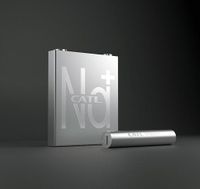At a recent quarterly call with investors on March 20, 2025, Contemporary Amperex Technology (CATL), the world’s largest battery maker, provided an update on its sodium-ion cell manufacturing plans, marking a significant development in the energy storage sector.
CATL announced that its upcoming second generation sodium-ion battery will be produced at a lower manufacturing cost compared to the popular lithium iron phosphate (LFP) batteries currently dominating the market. This is a crucial development as the company’s sodium-ion cells are reportedly nearing the energy density capabilities of LFP batteries, which have become the standard in both consumer electronics, like 200W power banks, and mainstream electric vehicles.
The increasing performance of sodium-ion batteries may signal a shift in the energy market as CATL considers mass production of these batteries to be inevitable. As stated by the company, "Once large-scale adoption is achieved, sodium-ion batteries will have a certain cost advantage over LFP batteries." This assertion highlights the confidence CATL has in the future of sodium-ion technology and its potential to disrupt the current battery chemistry landscape.
This update comes after years of research and development in the sodium-ion domain, where CATL has been conservative with its commercialization estimates. The company’s approach contrasts with startups that have pursued solid-state or advanced sodium-ion technologies, often resulting in specialized, high-cost products. By focusing on a scalable and cost-effective solution, CATL aims to meet the demands of a growing market.
CATL has been recognized for its careful evaluation of new technologies, opting to prioritize feasibility in mass production over immediate advancements that could lead to expensive offerings. This strategic thinking has enabled CATL to maintain its lead in the battery industry. For instance, when NIO sought a partnership with CATL for a battery featuring a 95% solid electrolyte, the latter declined, citing the need to prioritize existing orders. Consequently, NIO partnered with a startup to develop its own 150 kWh semi solid-state battery, which has become costly for consumers.
Looking ahead, CATL’s experience in solid-state battery development extends over a decade, although the firm caution against expecting mass adoption before 2027. This timeline revision is a shift from prior estimates but reflects the company’s tendency to safeguard its broader business interests by avoiding overestimation of market readiness.
Regarding sodium-ion technology, even as CATL’s production potential enhances, the company is taking a measured approach to perfect the chemistry to ensure it is conducive to low-cost mass production. This careful calibration is intended to optimize performance while minimizing costs, setting the stage for what could be a monumental shift in battery technology.
The advantages of sodium-ion batteries lie not only in reduced costs but also in the potential for widespread application across various sectors, from electric vehicles to renewable energy storage. As manufacturers and consumers alike seek sustainable, efficient power sources, the ongoing evolution of battery technology becomes increasingly critical.
In conclusion, CATL's commitment to sodium-ion battery technology showcases a proactive adaptation to market demands while continuing to emphasize reliability and cost-effectiveness. With the anticipated benefits of this new chemistry, there is a strong possibility that sodium-ion batteries could soon emerge as a leading alternative to LFP batteries, aligning with global trends toward greener energy solutions and paving the way for the next wave of electric vehicle innovations.




